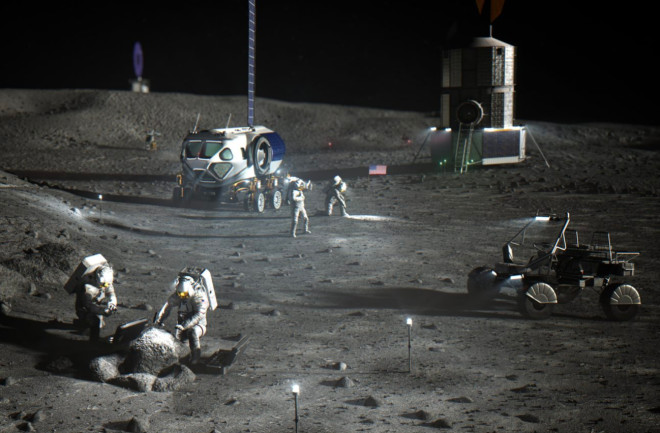Living on the same planet that we evolved on, it can be easy to take things for granted. We have an abundance of fuel and fresh water, plants and animals for food, and an atmosphere with plenty of oxygen.
Yet we also have plans to send people off-world. In the coming decades, humans will set out to explore our solar system in greater detail than ever before; we have plans to erect a base on the moon through NASA’s Artemis mission, and even send the first people to Mars.
Is There Oxygen in Space?
No, there is no oxygen in space. Therefore, scientists and engineers must figure out how to best provide crucial resources to the people who first set foot on these foreign worlds.
The production and recycling of fuels central to human life support systems will be key, as resupply missions or resource extraction might not be possible.
Read More: The Biggest Space Missions to Look For in 2023
Artificial Photosynthesis Device
A common device used in the production of oxygen and hydrogen in space is the water electrolyser. It uses electricity to split water into oxygen and hydrogen, thereby converting electric energy into chemical energy that can be used as fuel or as an oxygen supply.
However, in a new study, researchers investigated the viability of using a photoelectrochemical (PEC) device as the primary system for creating hydrogen and fuel in space.
“A PEC device operates as an artificial photosynthesis device, integrating in a similar way to natural photosynthesis the processes of light absorption, charge separation and catalysis,” says Katharina Brinkert of the University of Warwick, a co-author of the study.
The new devices may save weight and size when sending payloads into orbit from Earth — potentially providing a more energy efficient means of creating oxygen and hydrogen than previous systems, which relied on water electrolysis.
“Moreover, they could combine the production of oxygen with the ‘removal’ of carbon dioxide and the production of fuels — a great advantage,” says Brinkert. “We have shown that when they are combined with solar concentrators, they actually provide a viable possibility for space applications.”
Read More: Giant Space Habitats: Science Fiction or the Future?
Other Ways To Produce Oxygen in Space
Zooming out, there are other ways to produce resources in foreign space environments.
One such device is the Mars Oxygen In-Situ Resource Utilization Experiment, or MOXIE, an oxygen-producing module on one of the Martian rovers. MOXIE converts Martian atmospheric carbon dioxide directly into oxygen using an electrolyser — though its yields of oxygen have been relatively low.
Researchers are also investigating possible ways to extract oxygen from Martian and lunar soil. But they also face significant challenges, such as avoiding toxic chemicals that are present in the soil.
Read More: How an Astronaut Sleeps in Space
Living in Space
And life support systems don’t stop at creating oxygen: On top of producing breathable air and creating fuel, journeys to Mars will also require an efficient wastewater recycling system and a way to source local materials for equipment repair.
We must also consider the conditions through which human psychology can survive and thrive, outside of the conditions that are right for our physiological survival alone. NASA is already conducting Mars simulations, to see how people behave in confined spaces and farther away from help than anyone has ever been.
When we’ve finally developed technology that serves our logistical, physical and psychological needs, we’ll be that much closer to making our exploration of other worlds a reality.
Read More: Four NASA Subjects Are Now in Isolation for Mars Simulation

